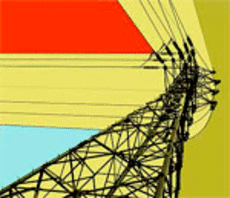For decades, sad to say, electric power has been seen as unexciting, low-tech, and has-been; with digital communications, software engineering, and computation attracting most of the top talent, North America has had to look to Asia to find recruits to fill the shoes of retiring power engineers.
Of course, as Erich Gunther observes in the inaugural issue of IEEE's smart grid newsletter, the electricity system is by no means low tech: It's in fact a very high-tech but largely mature bundle of technologies. Still, there's irony that in this time of jobless recovery, electric power suddenly is the place to be.
You only need to google on smart grid jobs to get a sense of the opportunities out there. So, if you're not already enrolled in a program that will train you to apply digital communications and computing technologies to electricity transmission and distribution, go to it, young person!
The U.S. stimulus bill has allocated $100 million to smart grid training, and that money has been distributed to 54 programs to train 30,000 engineers. As The Institute has described, IEEE's Power & Energy Society established a power engineering workforce initiative, which advised the energy department how to spend the stimulus money.
What are some of the main technical challenges facing the young and talented?
One perspective is to be found in a report prepared by PES's Power and Energy Engineering Workforce Collaborative: "Preparing the U.S. Foundation for Future Electric Energy Systems: A Strong Power and Energy Engineering Workforce."
Another can be gleaned from the North American Electric Reliability Corporation's "Potential Reliability Impacts of Emerging Flexible Resources," which appeared last November.



